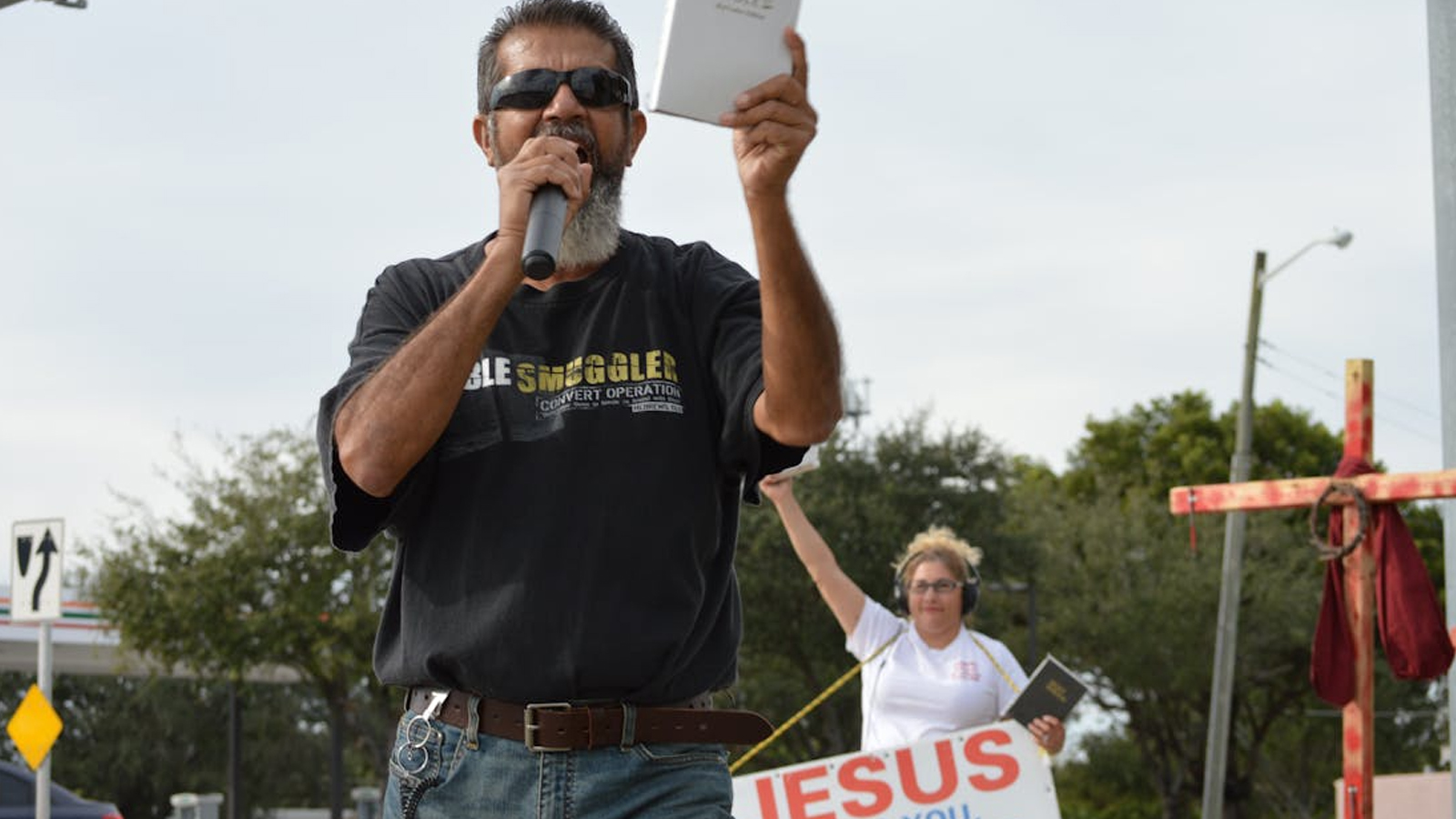It’s not uncommon for skeptics of Christianity to point to differences between the New Testament Gospel accounts as evidence of corruption or unreliability. I’ve discussed many of these alleged contradictions in my talks around the country, and I’ve written about many of them here at ColdCaseChristianity.com. One example sometimes offered by critics is the sign posted above the cross of Jesus. The simple, brief message of this sign is recorded by all four Gospel authors, yet none of them record precisely the same words. How could these four men fail to record the same sign, given the importance of the moment and the brevity of the message? Look at the variations offered by the Gospel authors:
“This is Jesus the King of the Jews” (Matthew 27:37)
“The King of the Jews” (Mark 15:26)
“This is the King of the Jews” (Luke 23:38)
“Jesus of Nazareth, the King of the Jews” (John 19:19)
In evaluating alleged “contradictions” of this nature, I think it’s important to remember a few overarching principles related to eyewitness testimony (I describe many of these principles in my first book, Cold-Case Christianity). Even though I accept and affirm the inerrancy of Scripture, inerrancy is not required of reliable eyewitnesses. In fact, I’ve never had a completely inerrant eyewitness in all my years as a homicide detective. In addition, I’ve never had a case where two witnesses have ever agreed completely on the details of the crime. Eyewitness reliability isn’t dependent upon perfection, but is instead established on the basis of a four part template I’ve described repeatedly in my book and on my website. But beyond these generalities, much can be said specifically about the variations between descriptions of the sign over Jesus’ cross. I take the following approach when evaluating multiple eyewitness accounts, and the same methodology can be used to evaluate these signs:
Identify the Common Details
When interviewing multiple eyewitnesses, I listen carefully for common features in their testimony. In every witness observation, some details are more important than others; some aspects of the event stick out in the mind of the observers more than others. In this case, one expression is repeated by all four authors: “the King of the Jews”. Why does this one aspect of the sign appear repeatedly without variation? These words describe the crime for which Jesus was executed. Jesus was crucified because He proclaimed Himself a King; He was executed for His alleged rebellion against Caesar. This is consistent with the trial accounts we have in the Gospels and also accurately reflects the actions taken by the Roman government against other popular rebels. While we, as Christians, now understand God’s plan related to the death and resurrection of Jesus, the authors of the Gospels are simply recording the one most prominent feature of the sign: the description of Jesus’ crime.
Recognize the Perspective of Each Eyewitness
Every witness offers a view of the event from his or her unique perspective. I’m not just talking about geographic or locational perspectives here, but I am also talking about the personal worldview, history and experience every witness brings to the crime. All witness testimony is colored by the personal interests, biases, aspirations, concerns and idiosyncrasies of the eyewitnesses. In this particular case, an important clue was recorded by John to help us understand why there might be variation between the accounts. John said, “Then many of the Jews read this title, for the place where Jesus was crucified was near the city; and it was written in Hebrew, Greek, and Latin.” The sign was written in a variety of languages and we simply don’t know how much variation occurred between these translations. The perspective and life experience of each author now comes into play. Which translation was the author referencing? Even more importantly, what were the concerns of the author related to the event? Some witnesses are more likely to repeat a victim’s name than others (if, for example, they knew the victim personally). Others will focus on something about which the witness had firsthand knowledge. I’ve seen an incredible amount of variation between reliable accounts on the basis of nothing more than personal perspective.
Consider the Conditions of the “Interview”
In working cold cases over the years, I’ve read my fair share of investigative supplemental reports containing eyewitness accounts. I’ve come to recognize the role interviewers have on the accounts given by eyewitnesses. Years later, when re-interviewing these same eyewitnesses, I’ve uncovered additional information simply because I asked questions neglected by the first interviewer. When evaluating an account from the past, it’s important to recognize the location, form and purpose of the interview. This will have a direct impact on the resulting account. Something similar must be considered when evaluating the description of the sign on Jesus’ cross. We simply don’t know precisely the purpose of each author or the conditions under which each author wrote his Gospel. Why, for example, is Mark’s version of the sign so brief? Why, for that matter, is Mark’s entire Gospel so brief? Was there something about Mark’s personality accounting for his brevity (there does seem to be some evidence of this given the short, emotionally charged nature of his account), or was something even simpler involved (like a shortage of papyrus)? We’ll never know for sure, but we simply cannot assume each author was writing under the exact same conditions. No two witnesses are interviewed in precisely the same way.
Differentiate Between Complimentary and Conflicting Accounts
When comparing two eyewitness accounts, I am more concerned about unresolvable contradictions than complimentary details. In fact, I have come to expect some degree of resolvable variation in true, reliable eyewitness accounts. While there are clearly variations between the sign descriptions in the Gospels, these dissimilarities don’t amount to a true contradiction. Consider the following reasonable message on the sign:
“This is Jesus of Nazareth, the King of the Jews”
If this was the message of the sign, all four Gospel accounts have captured a complimentary, reliable summation of the sign, even though there is some expected variation between accounts. None of these accounts contain an unresolvable, troublesome claim like:
“This is Judas Iscariot, the King of the Jews”
If one of the accounts contained this information, we would truly have a conflict worthy of our attention. There’s a difference between complimentary variation and conflicting description.
Assess the Opportunity for Collusion
Whenever I am called to a crime scene as a detective, the first request I make of the dispatcher is to separate the eyewitnesses before I get there. I request this so the witnesses won’t have the opportunity to talk to one another about what they’ve seen. Witnesses will sometimes try to resolve any variations before I get there. I don’t want them to do this; that’s my job, not theirs. Instead, I want the messy, sometimes confusing, apparently contradictory accounts offered by every group of witnesses in such a situation. There have been times, however, when witnesses have the opportunity to consult with one another for several hours before I arrive on scene. When this is the case, and their individual accounts still vary from one another, I usually have even more confidence in the reliability of these accounts. When people have the opportunity to align their statements, yet still refuse to do so, I know I am getting the nuanced observations I need to properly investigate the case. The Gospel authors (and the early Church) certainly had the opportunity to change the descriptions to make sure they matched, but they refused to do so. As a result, we can have even more confidence in the reliability of these accounts. They display the level of variation I would expect to see if they were true, reliable eyewitness descriptions.
If the four authors of the Gospels had written precisely the same words throughout their Gospel accounts, skeptics would be no more confident in their content. In fact, I suspect, critics of the New Testament would be even more vocal in their opposition. The Gospels are appropriately varied and nuanced, just like all multiple eyewitness accounts. The variations between the sign descriptions is further evidence of this expected variation. This level of dissimilarity should give us confidence in the accounts, rather than pause. Why are there four versions of the sign on Jesus’ cross? Because the accounts are written on the basis of eyewitness observations. They demonstrate the characteristics we would expect if they are reliable descriptions of a true event in history.





















